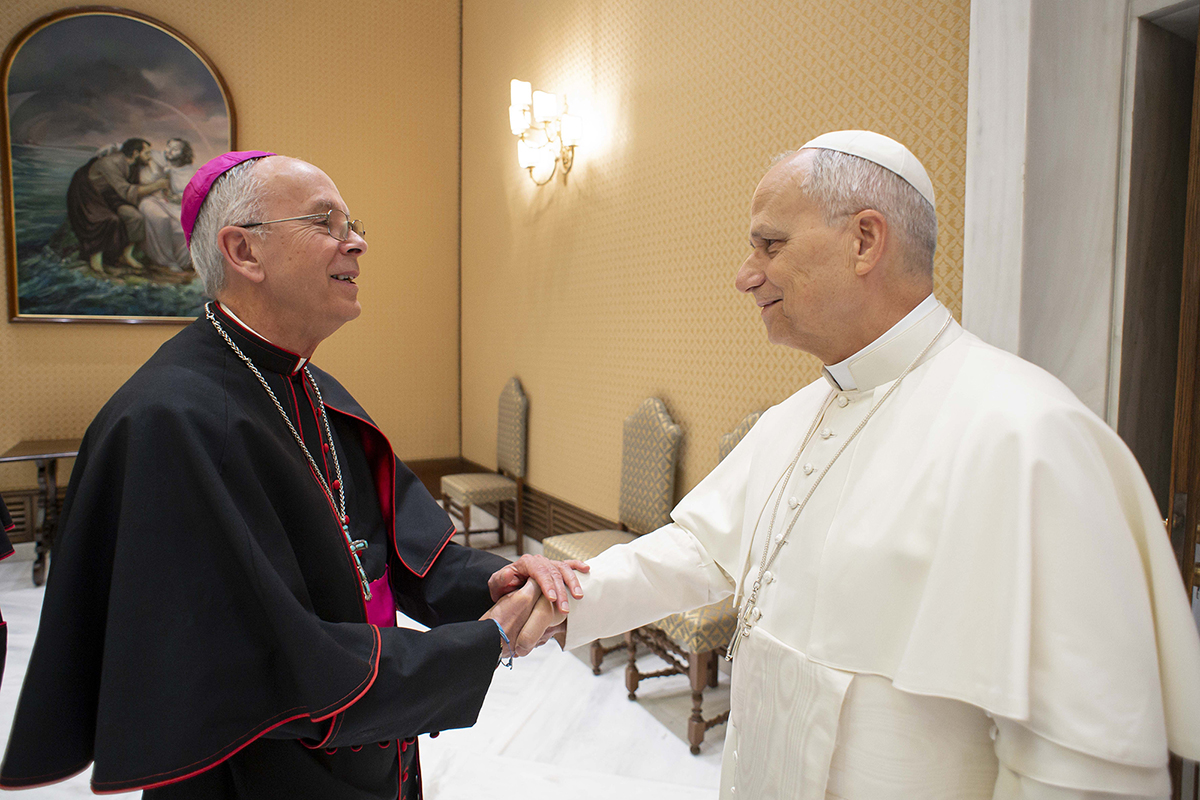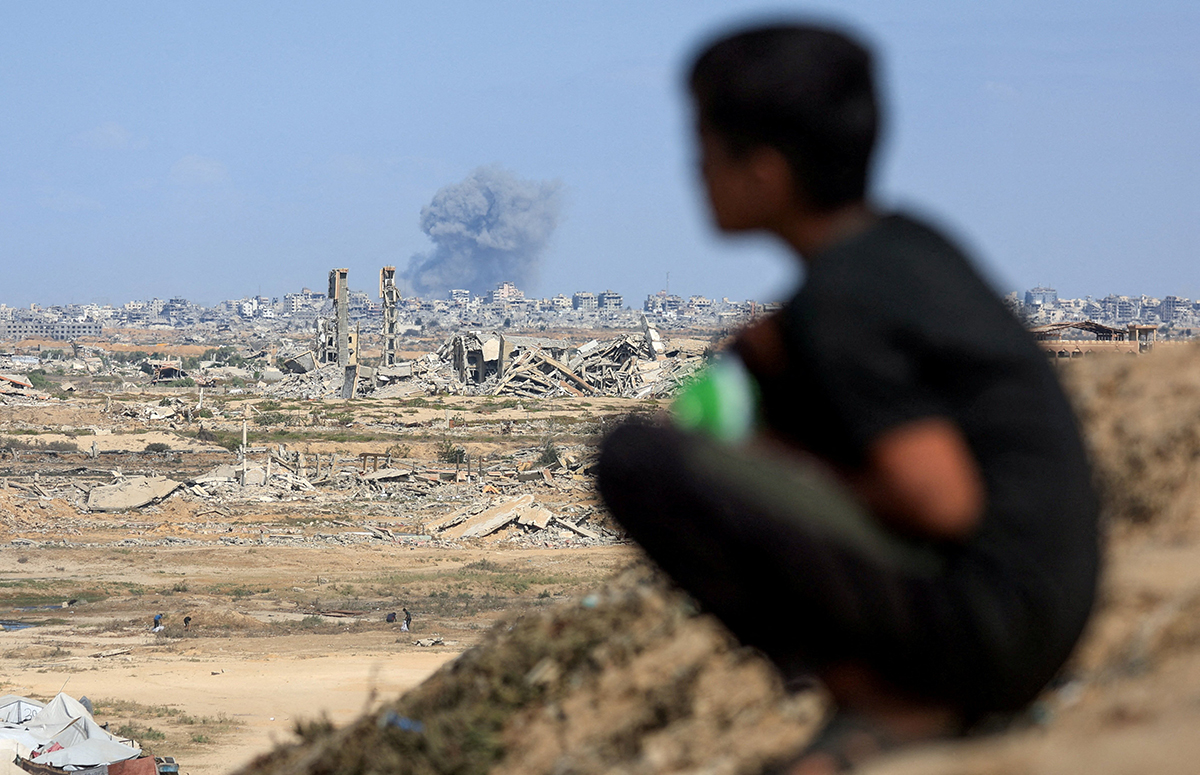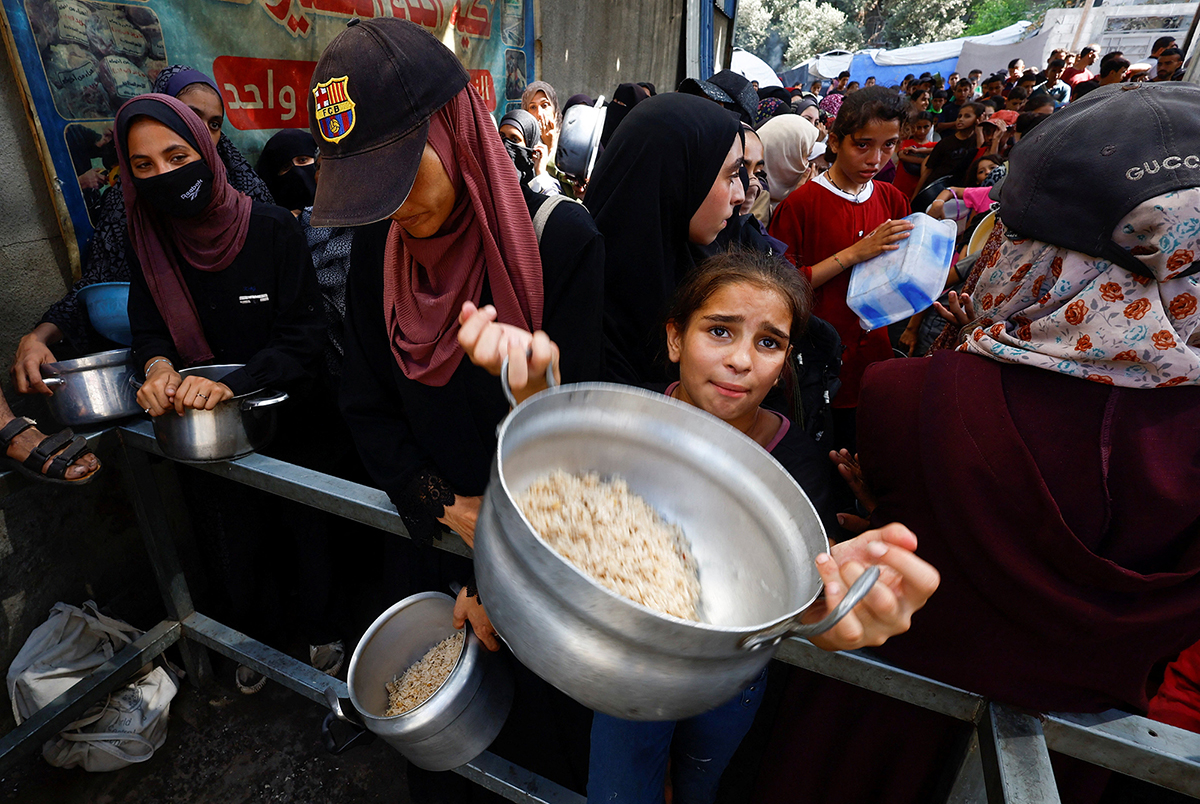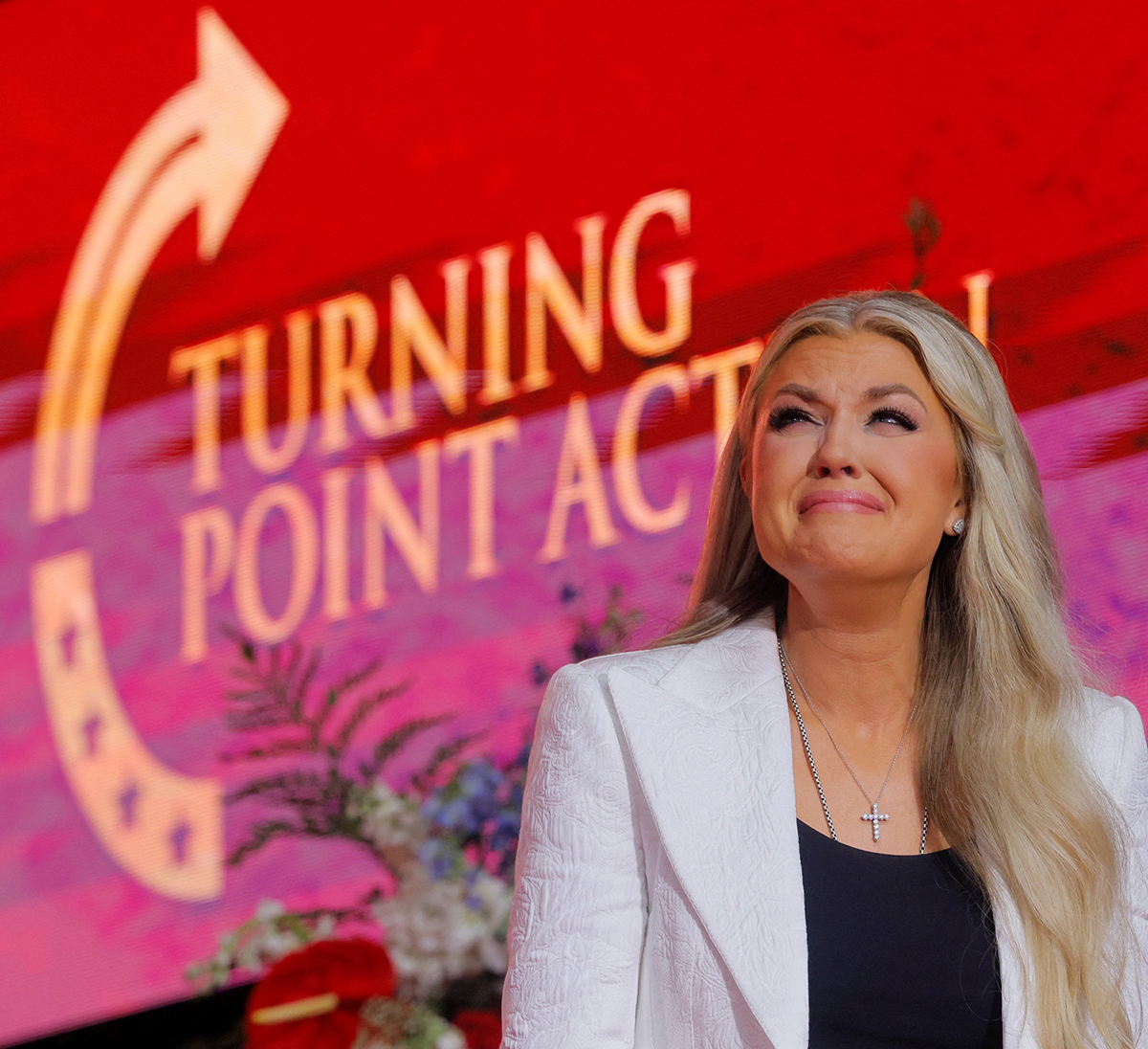4,000 process in Jerusalem for Palm Sunday amid ongoing conflict
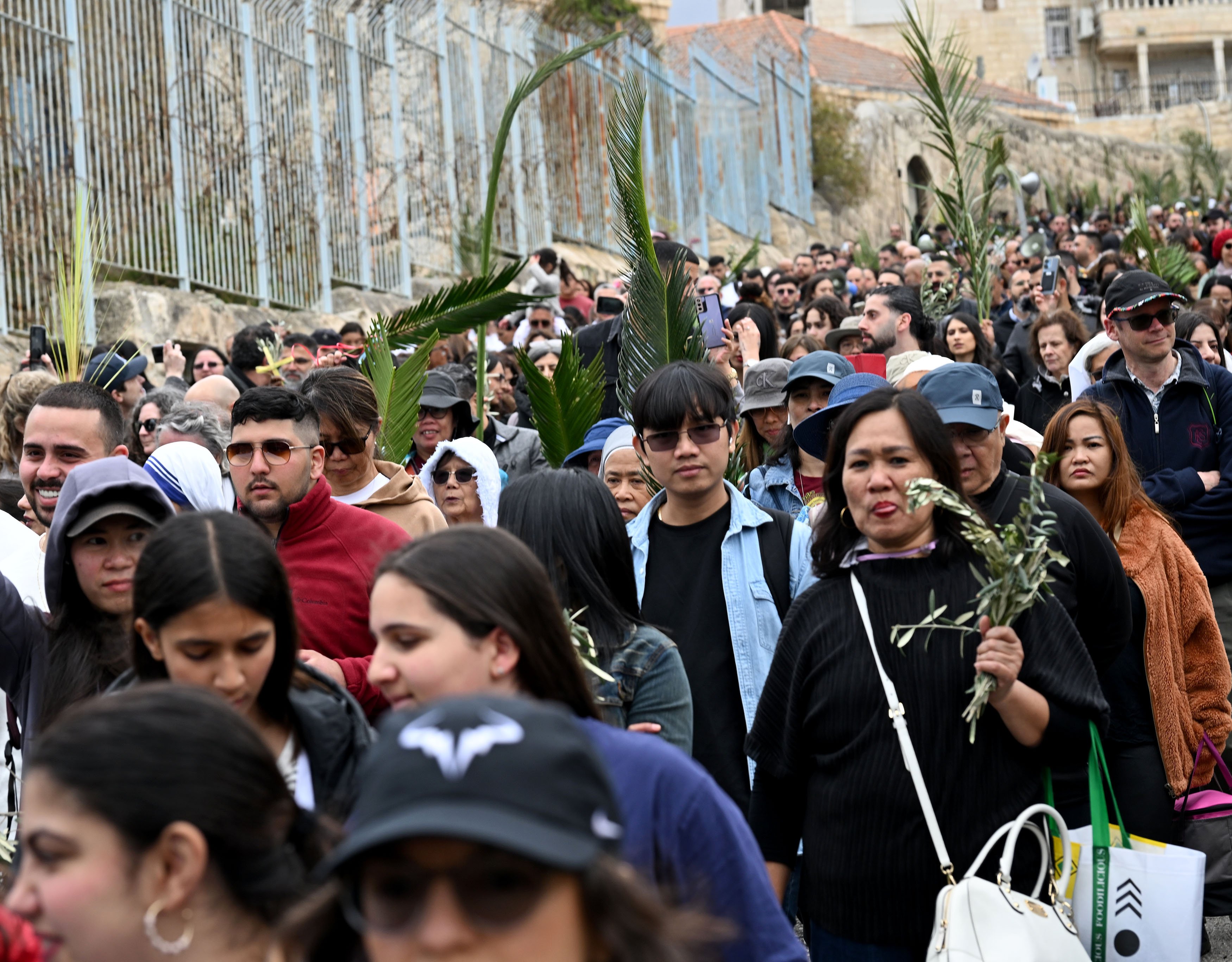
JERUSALEM — For the second year in a row, few foreign pilgrims were in attendance at the traditional Palm Sunday procession from the Mount of Olives into the Old City of Jerusalem due to the ongoing Israel-Hamas war in the Gaza Strip. But even the gray skies that threatened rain didn’t dampen the spirit of the 4,000 participants.
Most of them were Christians from Jerusalem and the Galilee, as well as a few Christians from the West Bank, foreign diplomats and NGO employees, members of religious orders and foreign workers. Ethiopian Orthodox pilgrims, with their traditionally embroidered-trimmed white gowns, also took part in the procession, as in 2025 the festivals of all the Orthodox and Catholic Churches converge.
Some 6,000 initial travel permits were issued for West Bank Christians to attend Holy Week celebrations, with an additional 2,000 expected later in the week but not yet confirmed, according to the Latin Patriarchate of Jerusalem.
Sheltering from the rain under a doorway, Batrice Batrice, a Catholic from Nazareth, said he had brought his three teenage children, his wife and his aunt to take part in the procession this year, knowing that it would not be as joyous as other years, because he thought it was important to maintain hope and a positive attitude.
“It was happier when there were many pilgrims here. Ten years ago these roads were full of people,” he said. “We always have to keep hope alive and believe that the situation will be better. There is always someone up there watching out for us.”
“We are still rejoicing,” said Violeta Pasco, a Filipino caretaker who works in Tel Aviv and came to Jerusalem with her husband and 15-year-old daughter. “Even when it is difficult we need to rejoice. No one will stop us from rejoicing. It is our faith.”
The day began with the palm procession and Pontifical Mass in the Church of the Holy Sepulcher where Latin Patriarch Cardinal Pierbattista Pizzaballa blessed the palm fronds, and a procession walked around the edicule during the Pontifical Mass. The Holy Edicule is raised over the place of Christ’s tomb. Greek Orthodox and Copt faithful also filled the church as they celebrated Palm Sunday.
In his Palm Sunday procession message, Cardinal Pizzaballa urged the faithful to remember “what matters most” despite the continuing difficulties: “We are here today, local Christians and pilgrims, all together, to say strongly that we are not afraid. We are the children of light and resurrection, of life. We hope and believe in the love that overcomes everything.”
“We have encountered Him. And we are here to cry it out, strongly, confidently, and with all the love we can, which no one can ever extinguish. No one will separate us from our love for Jesus,” he said.
“I think it is just important to always keep hope no matter what the situation is. On these special holy times, we need to focus ever more so on hope,” said Janice Stepp from Florida, who admitted that she and her family felt a bit of trepidation before she came. Once in the Holy Land, however, she had calmed down and had been amazed by the unique opportunities for prayer and contemplation.
“What we see in the news is very much exaggerated. I feel it is safe to visit here, and we have been everywhere. We got as much time as we wanted in the Church of the Nativity by the star where Jesus was born. It was an amazing opportunity,” she said.
Stepp said her group also made purchases from Christian shop owners in Bethlehem to help support the local Christian community.
More than 1,500 people have been killed in Israeli bombardment since it renewed the war on March 18, the Hamas-run health ministry in Gaza said.
In an interview with the Italian Tg2000 news program, Cardinal Pizzaballa called the situation in Gaza “dramatic, catastrophic, shameful,” one where the dignity of the 2.3 million people living there is not being taken into consideration.
“We cannot think that they are all complicit with terrorism or crime,” he said. “We must be open to all perspectives, keeping our attention high, but also that of all the churches around the world, of everyone willing to listen to us, on the seriousness of what is happening.”
On Palm Sunday, pope says to carry the cross with compassion
By Justin McLellan
Catholic News Service
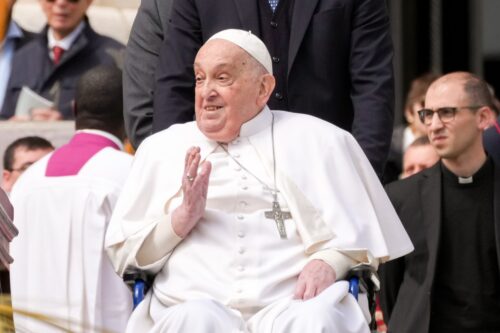
VATICAN CITY — Carrying the cross means more than bearing personal suffering — it means stepping into the pain of others and walking beside them, Pope Francis wrote at the start of Holy Week.
“To carry the cross of Christ is never in vain,” he wrote in his homily for Palm Sunday Mass in St. Peter’s Square April 13. “It is the most tangible way for us to share in his redemptive love.”
The pope, still recovering from respiratory infections, made only a brief appearance in the square at the end of Mass, but his homily was read by Argentine Cardinal Leonardo Sandri, subdean of the College of Cardinals, who celebrated the Mass.
“Have a good Palm Sunday. Have a good Holy Week,” the pope said with a strained voice from the stage in St. Peter’s Square. He was not using a nasal cannula to receive oxygen during his public appearance unlike the week before when he had come to the square at the end of Mass to a deliver a blessing.
The Palm Sunday Mass began with throngs of laypeople processing into St. Peter’s Square holding palm branches, followed by more than 60 cardinals and bishops.
More than 20,000 people, many holding olive branches — a Palm Sunday tradition in Italy — listened as the Passion narrative from St. Luke’s Gospel was proclaimed.
In his written homily, Pope Francis reflected on Simon of Cyrene, the man forced by Roman soldiers to carry the cross behind Jesus.
Simon, the pope said, did not speak but simply acted, and in doing so became part of salvation history. “Between him and Jesus, there is no dialogue; not a single word is spoken. Between him and Jesus, there is only the wood of the cross.”
Pope Francis invited Christians to reflect on how they respond to the suffering of others — with “anger or pity, compassion or annoyance” — and to recognize Christ in the people whose lives are burdened by pain and injustice.
“How many Simons of Cyrene are there in our own day, bearing the cross of Christ on their shoulders!” he wrote. “Can we recognize them? Can we see the Lord in their faces, marred by the burden of war and deprivation?”

